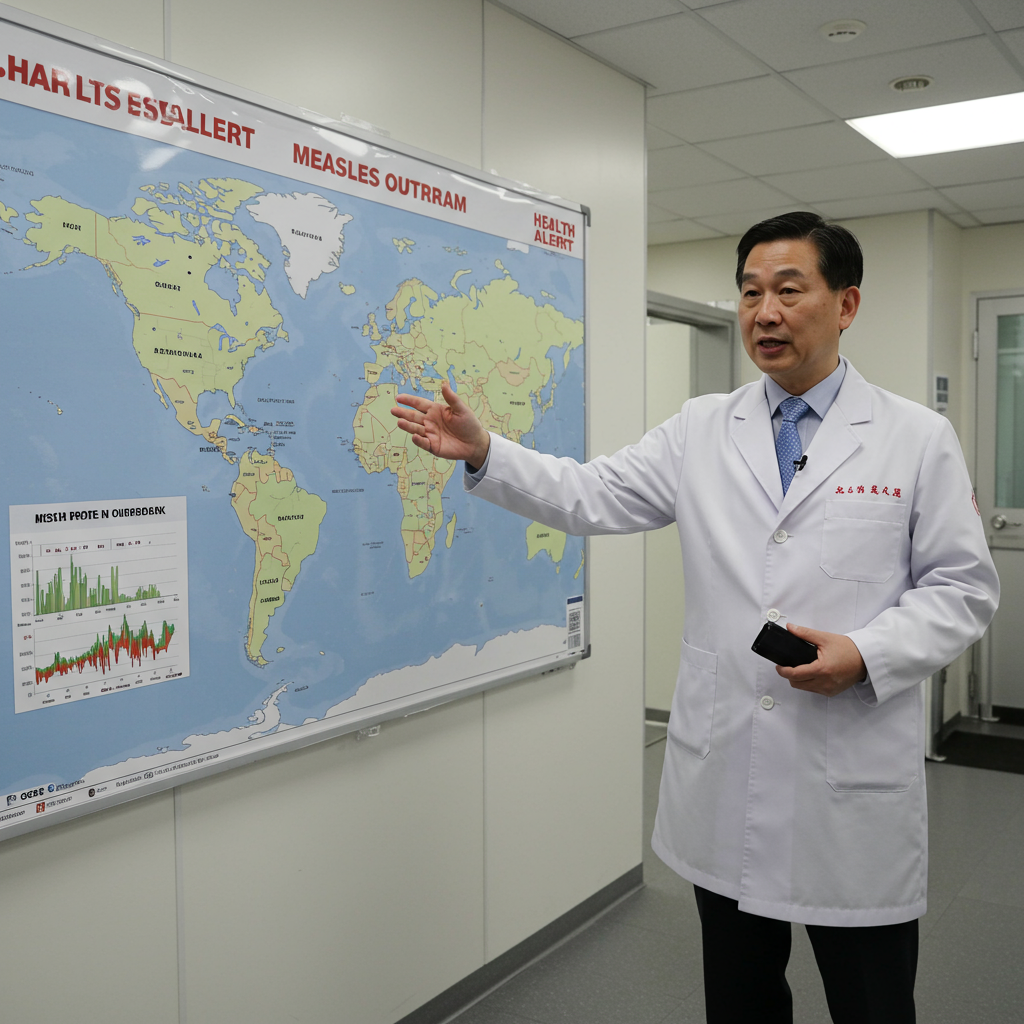The National Academy of Medicine (NAM) recently announced the election of 100 distinguished individuals, comprising 90 regular members and 10 international members. This prestigious induction, revealed during NAM’s annual meeting in Washington D.C., marks one of the highest honors for professionals in health and medicine. It celebrates those who have demonstrated extraordinary achievement and unwavering dedication to service.
NAM President Victor J. Dzau underscored the significance of this new class. He emphasized that these exceptional health and medicine leaders and researchers bring critical strength to the Academy’s mission. Their proven excellence in tackling public health challenges, spearheading major discoveries, enhancing healthcare delivery, advancing health policy, and addressing health equity will be vital in confronting the most pressing health issues of our time.
The National Academy of Medicine: A Pillar of Progress
Established originally as the Institute of Medicine in 1970 by the National Academy of Sciences, the National Academy of Medicine plays a crucial role in advancing health, science, medicine, and related policy. It actively inspires positive change across diverse sectors. Working in tandem with the National Academy of Sciences and National Academy of Engineering, NAM provides independent, objective analysis and expert advice to the nation. These combined efforts aim to solve complex problems and inform public policy decisions, ensuring a robust scientific foundation for national progress.
The National Academies collectively promote education and research, acknowledge outstanding contributions to knowledge, and boost public understanding of STEMM (Science, Technology, Engineering, Mathematics, and Medicine). Upon their election, NAM members commit to volunteering their invaluable service in the Academy’s diverse activities, shaping the future of health and science.
A Rigorous Selection Process for Elite Expertise
New members are chosen through a meticulous process, nominated and elected by existing members. This rigorous selection recognizes individuals who have made profound contributions to the advancement of medical sciences, healthcare, and public health. Ensuring a broad spectrum of talent and perspectives is a cornerstone of NAM’s mission. Its Articles of Organization stipulate that at least 25% of the membership must be selected from fields beyond direct health professions. This includes experts from areas such as law, engineering, social sciences, and the humanities, enriching the Academy’s interdisciplinary dialogue and problem-solving capacity.
With the addition of this year’s cohort, the National Academy of Medicine now boasts a total membership exceeding 2,500, including more than 200 international members. This diverse assembly of minds forms a formidable collective dedicated to shaping a healthier future.
Spotlighting Groundbreaking Contributions: A Class of Innovators
The newly elected members represent a vast array of disciplines, each bringing unique insights and transformative achievements. Their work spans the cutting edge of biomedical research, innovative patient care, and impactful health policy.
Transforming Cancer Treatment and Research
Many of the new members have revolutionized our understanding and treatment of cancer. Omar Abdel-Wahab, for instance, pioneered uncovering genetic causes for blood cancers, developing therapeutic approaches that have transformed clinical care. John C. Byrd demonstrated the effectiveness of non-oncogene addiction strategies, developing Bruton’s tyrosine kinase inhibitors that dramatically changed chronic lymphocytic leukemia from a fatal disease to one with a natural life expectancy.
From the external research, Carlos L. Arteaga is recognized for his pivotal discoveries in breast cancer progression and drug resistance, directly influencing clinical trials and new drug approvals. Nina Bhardwaj made pioneering discoveries in human dendritic cell subsets, crucial for cancer and viral immunity, leading to the first approval of a cell-based cancer vaccine. Lisa M. Coussens conducted paradigm-shifting studies on inflammation and cancer, identifying the critical role of B and myeloid cells in tumor progression. Her work has led to successful clinical studies targeting these pathways. Silvia C. Formenti introduced a new paradigm, showing that focal radiotherapy can convert a tumor into an individualized vaccine, sparking a new field in radiation biology. Victor E. Velculescu made pioneering contributions by discovering genomic alterations in cancer and developing non-invasive cancer detection technologies, including the first genome-wide sequence analysis in human cancer.
Pioneering Advances in Neuroscience and Mental Health
Innovators in brain science and mental well-being also comprise a significant portion of the new class. Sian Leah Beilock advanced our understanding of how anxiety and high-pressure situations compromise complex skill performance. Cameron S. Carter made fundamental contributions to understanding the prefrontal cortex’s role in higher cognitive functions and its pathology in schizophrenia.
Suzanne N. Haber is honored for her pioneering translational studies identifying neural network dysfunction in psychiatric and neurological disorders. Her work is crucial for developing new therapeutic targets. From external summaries, Tracy Bale and Neill Epperson (also elected) are recognized for their collaborative research on childhood adversity, epigenetics, and sex differences in brain development, crucial for understanding mental health risks. Guoping Feng made breakthrough discoveries concerning the pathological mechanisms of neurodevelopmental and psychiatric disorders like OCD and autism, providing foundational knowledge for new therapeutics. Morgan Sheng transformed our understanding of excitatory synapses, revealing the postsynaptic density as a protein network controlling synaptic signaling.
Driving Public Health and Health Equity Initiatives
A strong emphasis on public health and health equity shines through in many members’ contributions. Wanda Barfield led federal public health programs on reproductive health, significantly decreasing health disparities. Pamela Y. Collins helped shape global mental health, emphasizing inclusive equity and integration of mental health services worldwide. Carrie H. Colla conducted influential research on how payment policy impacts health outcomes and inequality, serving leadership roles in health analysis.
External research highlights Toyin Ajayi for her pioneering work in primary care, improving outcomes for low-income populations through Cityblock Health. Chiquita Brooks-LaSure is honored for her career in health policy, including her role in drafting and implementing the Affordable Care Act. Robert D. Bullard, known as “the father of environmental justice,” was elected for his vision and research combating injustices affecting vulnerable communities impacted by pollution. Donald K. Warne significantly advanced Native American health through advocacy, education, and policy reform, empowering Native communities. Joseph Wood Thompson led the design and evaluation of new episode-based payment models that influenced federal health systems.
Leveraging Technology and Innovation in Healthcare
Several new members are at the forefront of technological innovation in medicine. Daniel A. Fletcher developed mobile phone-based microscopy for infectious disease diagnosis in developing countries. Dina Katabi pioneered digital health technology, enabling non-invasive remote health monitoring via AI and wireless signals, and developing digital biomarkers for Parkinson’s. Michael E. Matheny conducted groundbreaking research in using informatics for veteran healthcare and automated medical product safety surveillance, applying AI methods to create novel post-marketing surveillance algorithms. Lihong Wang pioneered 3D photoacoustic tomography, enabling high-resolution multiscale imaging from organelles to organisms, impacting cancer and brain disorder diagnosis.
From external sources, Daniel G. Anderson is recognized for his pioneering work in non-viral gene therapy and cellular delivery, leading to clinical applications. Regina Barzilay developed machine learning tools that revolutionized breast cancer screening and risk assessment, also impacting drug discovery. Michael F. Chiang made pioneering applications of biomedical informatics to ophthalmology, including AI and telehealth. Jennifer West was recognized for inventing novel biomaterials, including bioactive hydrogels and theranostic nanoparticles.
Championing Global Health Solutions
International members contribute significantly to addressing global health challenges. Naeemah Abrahams is a leading researcher on intimate partner and sexual homicide of women (femicide) in Africa, bringing global attention to the issue. Ibrahim Abubakar provided novel insights into tuberculosis epidemiology and understanding the spread of emerging infections. Facundo Damian Batista unraveled the biology of antibody-producing B cells, contributing to vaccine development for global diseases like malaria.
From external summaries, Jarbas Barbosa da Silva Jr. is honored for his contributions as head of Brazil’s health surveillance and regulatory authority and for bringing a regional health equity perspective as Director of the Pan American Health Organization. Samuel M. Kariuki is an internationally renowned leader in enteric infectious diseases, contributing fundamental insight into multi-drug-resistant infections and spearheading vaccine programs in sub-Saharan Africa. Kelly Chibale pioneered infectious disease drug discovery on the African continent, leading a team that discovered the first small molecule clinical candidate researched by an African-led international team.
The Commitment to Service: Strengthening Collective Ability
Each newly elected member exemplifies the spirit of service that underpins the National Academy of Medicine. Their election is not merely a recognition of past achievements but an invitation to actively contribute to the Academy’s ongoing efforts to advise the nation. Their diverse expertise, from genetic breakthroughs and surgical innovations to public policy and global health advocacy, will critically strengthen NAM’s collective ability. This ensures the Academy can continue its vital work of providing independent, objective analysis and advice on the most pressing health and scientific challenges facing society today.
Frequently Asked Questions
What is the National Academy of Medicine, and why is election significant?
The National Academy of Medicine (NAM) is a private, nonprofit institution established in 1970 as part of the National Academies of Sciences, Engineering, and Medicine. It provides independent, objective advice on health, science, medicine, and related policy to the nation. Election to NAM is considered one of the highest honors in these fields, recognizing individuals for their outstanding professional achievements, groundbreaking discoveries, and profound commitment to service that significantly impacts public health and healthcare.
How does the National Academy of Medicine ensure diversity among its members?
The National Academy of Medicine is committed to ensuring a broad range of perspectives and expertise within its ranks. A key mechanism for this is its Articles of Organization, which stipulate that at least one-quarter (25%) of its membership must be selected from fields outside the traditional health professions. This means experts from areas such as law, engineering, social sciences, and the humanities are actively sought and elected, enriching the Academy’s interdisciplinary approach to complex health challenges.
What impact do the newly elected members of the National Academy of Medicine have on future healthcare and policy?
The newly elected members of the National Academy of Medicine are leaders whose work directly influences the future of healthcare and policy. Their expertise drives major discoveries in areas like cancer treatment, neuroscience, and public health, leading to new therapies and diagnostic tools. Many are also instrumental in shaping health policy, advocating for health equity, and developing innovative models of care. By volunteering their service, these members contribute to NAM’s advisory role, informing national decisions and advancing solutions to critical health challenges.
Conclusion
The election of these 100 visionary leaders to the National Academy of Medicine represents a powerful infusion of expertise, innovation, and dedication into one of the nation’s most respected advisory bodies. From revolutionary cancer therapies and pioneering insights into brain function to transformative public health initiatives and cutting-edge technological advancements, their collective impact promises to shape the future of health and medicine for generations to come. Their commitment to service, coupled with NAM’s interdisciplinary approach, ensures that the most complex health challenges will be met with the highest caliber of scientific rigor and humanistic understanding.



